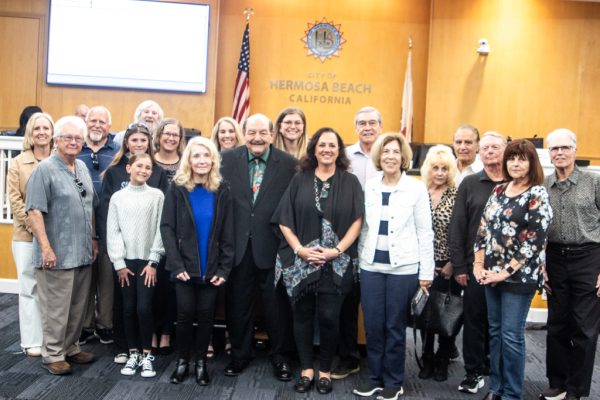
Redondo Beach’s Seaside Lagoon has been in flux since before Waterfront developer CenterCal’s proposal to open the saltwater swimming hole to the ocean. But a report indicating how much the city is fined by regional and national for the Lagoon’s operation, and how those fines will only increase going forward, further called the Lagoon’s future into question at Tuesday night’s City Council meeting.
The city has been assessed $246,000 in penalties for water discharge violations since 1999, as a result of the Lagoon’s water circulation system, which draws in water from the AES power plant, chlorinates it for swimmers, then dechlorinates it before discharging it back into the ocean.
“So we get the water, chlorinate it, swim in it, dechlorinate it, give it back cleaner than we got it, and we’re still being fined,” Mayor Steve Aspel said. “That’s just government at its finest.”
Opened in 1963, Seaside Lagoon has long been one of Redondo Beach’s trademark attractions, and is particularly unique as the only saltwater lagoon in the state. According to city staff, the lagoon attracts more than 75,000 swimmers during its late May to September operating season each year; it also plays host to numerous annual city events, including the Lobster Fest and the Fourth of July fireworks show.
As staff notes, the “rudimentary elements” of the 50-year-old water system have stayed the same, while the Los Angeles Regional Water Quality Control Board regulation have become increasingly stringent.
The city has been penalized for excess levels of Total Suspended Solids — including organic matter, industrial waste, sewage and silt. Twenty violations have occurred between the 2013 and 2015 operating seasons, and more penalties are forthcoming, staff said. Though very unlikely, potential penalties could range into the millions, Assistant City Manager Steve Witznansky said, should the Regional Board exercise their right to do so.
The city’s current National Pollutant Discharge Elimination Permit System operations permit has expired, and is currently in the renewal process. The lagoon, however, is permitted to operate under the most recent permit while its renewal is under review. City staff notes that informal discussions have suggested that a new permit would include increased testing requirements.
The city has been able to keep the Lagoon open through continued negotiations with the Regional Board. But, as it stands, the city may have two options: spending significant funds to update the water system, or closing the Lagoon.
District 2 Councilman Bill Brand remarked that CenterCal’s plan to open the lagoon to the ocean could expose swimmers to harmful bacteria concentrations. His suggestion, considering those concerns, is for the city to consider looking into the construction of a public pool along the waterfront. “It’s expensive, but I think that’d get a lot of support,” he said, comparing it to similar venues in Long Beach and Santa Barbara.
Assistant City Manager Mike Witzansky said that the city master-planned such a facility before, to the cost of $12 million dollars. “As that was many years ago, it’s dated, and we’d have to reevaluate costs.”
Brand motioned, referring staff to look at the costs of building a pool, either saltwater or freshwater, at the Lagoon site, getting a second from District 4 councilman Steve Sammarco. But the idea couldn’t get any further traction, appearing dead in the water when Aspel promised to veto the motion if it didn’t get at least four votes.
“We should be concentrating on finding a way to work with the state so they can recognize that it’s a unique location and treat it differently,” District 1 Councilman Jeff Ginsburg said. “It’s a unique place, and we might be able to maintain it.”
District 5 councilwoman Laura Emdee agreed. Her motion, to simply receive and file staff’s report without direction to look into a pool, was passed, 3-2.
“Our job now is to keep the lagoon open for as long as possible, and not pay a lot of fines in the meantime,” Aspel said. “It’s about keeping this open this summer.” ER











